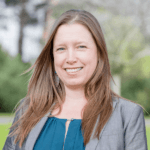Note: Since the time this article was written, the world has focused on facing the COVID-19 global pandemic. As governments and citizens shift rapidly to save lives, we can see opportunities to build connections and innovate solutions that will also serve us in addressing climate change. Scientific and environmental literacy are more important than ever, and the ECCLPS project described here illustrates how California’s public universities are moving forward with their commitment to partnering with K–12 and community educators to address these urgent challenges.
Since fall 2018, Ten Strands has co-led, project managed, and supported a groundbreaking collaboration known as ECCLPS (pronounced “eclipse”), the Environmental and Climate Change Literacy Project and Summit. ECCLPS has grown out of the work of distinguished climate scientist Dr. Veerabhadran Ramanathan (Dr. Ram), Bending the Curve: Climate Change Solutions, an undergraduate course being taught worldwide. With ECCLPS, Dr. Ram envisions 500,000 environmentally literate climate “warriors” graduating from California’s schools every year.
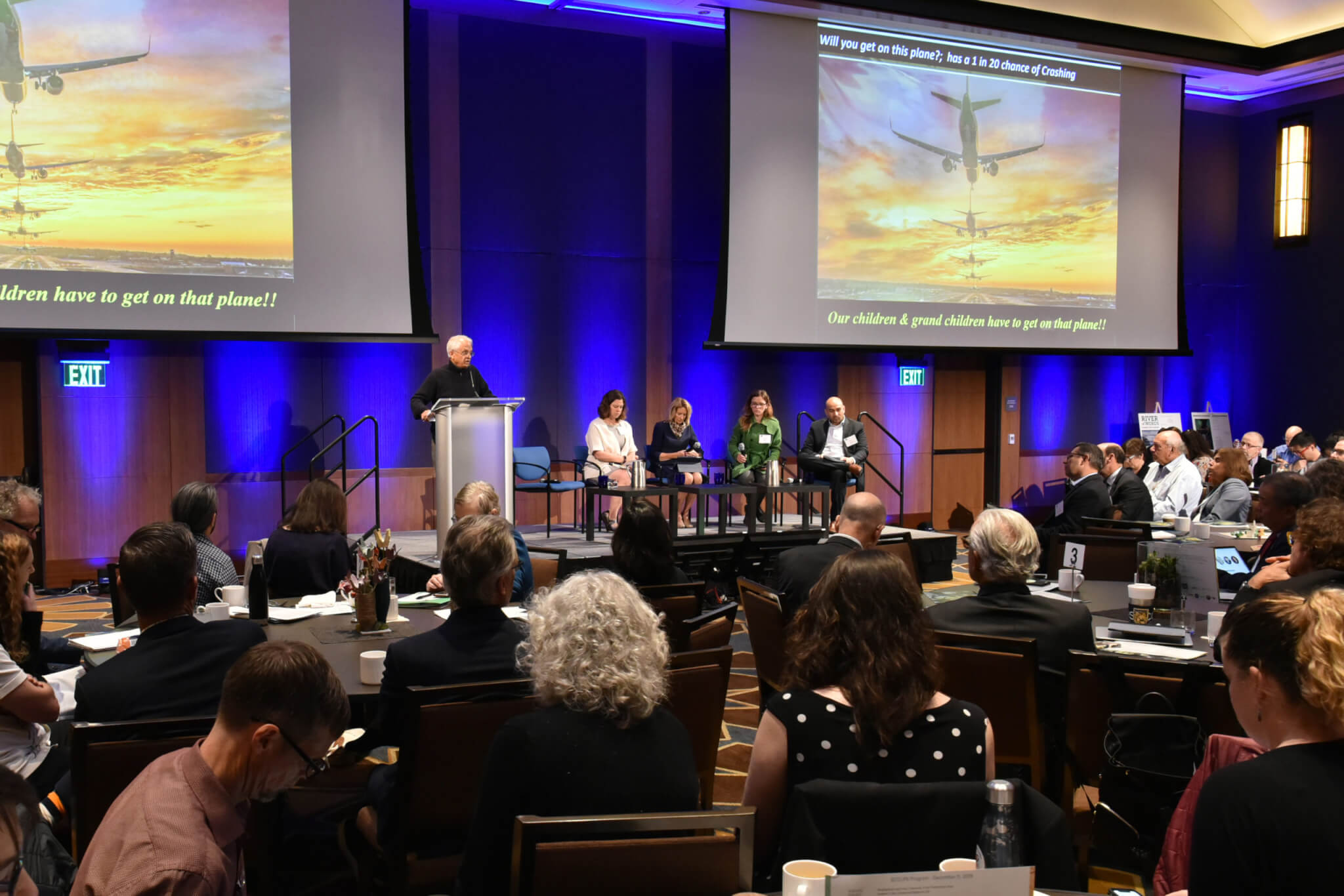
Bringing Stakeholders Together
Since 2018, Dr. Ram and his co-chairs on the ECCLPS steering committee have brought together a team of key stakeholders—the University of California (UC) and California State University (CSU) systems, leaders in K–12 education, students, nonprofits, state and national agencies, and philanthropists—to scale up PK–12 climate change education. In December 2019, 220 of us stakeholders gathered for a summit at UCLA and discovered the incredible richness and diversity of approaches to climate literacy throughout the state. We worked to forge a path together across an extremely broad coalition to ensure every student has access to high-quality learning about the most important issue of our times.
In preparation for the summit, over 50 leaders had worked through three subcommittees—pre-service teacher preparation, in-service professional learning, and curriculum—to produce a report and executive summary that outlines recommendations for all key stakeholders. The work of Ten Strands and our partners has created a supportive context for this work, and the 30+ educators we showcased at the summit were by all accounts just a fraction of the people throughout the state committed to the cause. As Richard Arum, dean and professor of sociology and education at the University of California, Irvine, School of Education, and ECCLPS pre-service subcommittee co-chair said at the conclusion of the summit, “You can’t help but notice the good news in terms of all the great things that are happening in the field already. . . .We have a lot to build on.”
However, Arum went on to point out work yet to be done: “[California’s effort at environmental education] is highly fragmented and would be more powerful if it were more intentional and systematic.” For ECCLPS, harnessing the already wide interest in climate change literacy while also broadening participation to other key groups and systems presents an exciting and urgent leadership challenge. This challenge is informed by work throughout the nation, such as Washington State’s ClimeTime initiative, and how ECCLPS handles the challenge may serve as a model for others wishing to learn from our work.
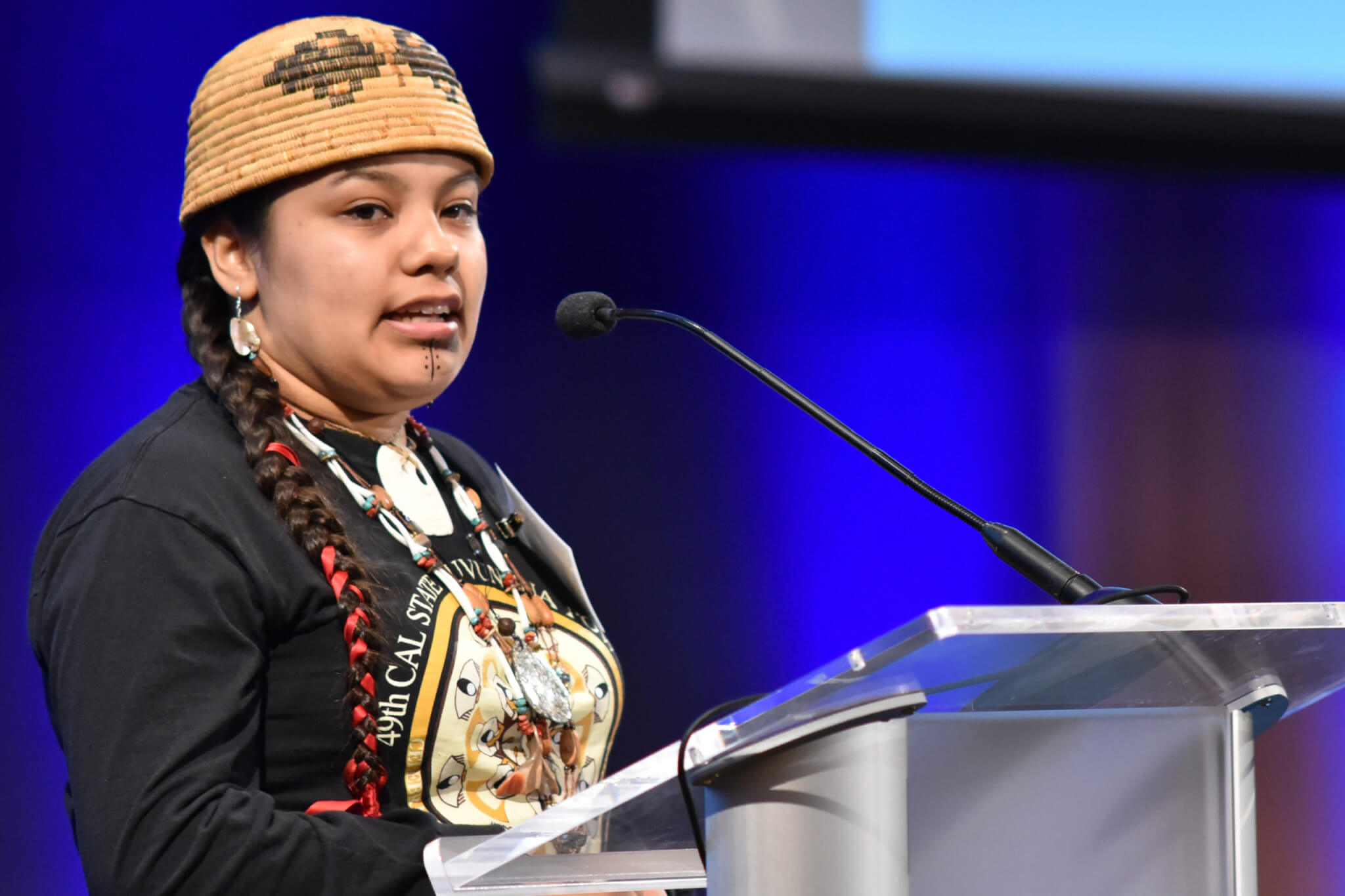
The ECCLPS summit served as a thunderous call to action from California’s leaders. We began with a land acknowledgement from Miztlayolxochitl Aguilera, of Gabrielino/Tongva and Mexica heritage and a B.S. student of Chicano and Latino studies at CSU Long Beach. She set a serious tone for our work together when she said,
We managed to remember our biggest responsibilities that have been left to us by our ancestors, and that is to live and to use the instructions that have been given to us on how to be human beings, to protect that which we are a part of, nature and the environment.
Janet Napolitano, president of the UC system and former United States Secretary of Homeland Security, echoed this statement by proclaiming, “We are here collectively addressing [climate change] because it is the single most existential problem we face in the world today.” Kate Gordon, director of the Governor’s Office of Planning and Research and senior policy advisor to California Governor Newsome on climate, said,
I was pleased to see in the [ECCLPS] report the approach of systems thinking. This is where the Newsome administration is in thinking about climate. It is part of and integrated into everything else we do. We need to be thinking about this across every agency and every part of the university. . . .How do we break down some of the silos so this becomes what’s underpinning everything we do?
Not a small task, to be sure!

Integrating Climate Change Education
A major concern of the ECCLPS steering committee has been how to integrate climate change into teachers’ already overloaded job descriptions. Fortunately, California’s K–12 leaders have developed a strong vision for 21st-century learning in which environmental literacy is already an explicit expectation. Some of the committee members from the scientific and higher education worlds were pleased to learn about the extensive foundational policies that have been built for teaching about climate change in California:
- The Education and the Environment Initiative legislation (2003).
- The adoption of California’s Environmental Principles & Concepts (EP&Cs) (2004).
- The adoption of model curriculum in science and social studies (2010).
- The integration of the EP&Cs into California’s Science Framework (2016), History-Social Science Framework (2016), Health Framework (2019), and Visual and Performing Arts Framework (expected 2020).
In addition, recent legislation (SB 720) (2018) updated California’s educational code to add the EP&Cs, climate change, and environmental justice to the state’s definition of environmental literacy and to mandate the incorporation of these topics into curriculum frameworks, standards, and instructional material adoption criteria in all core subjects.
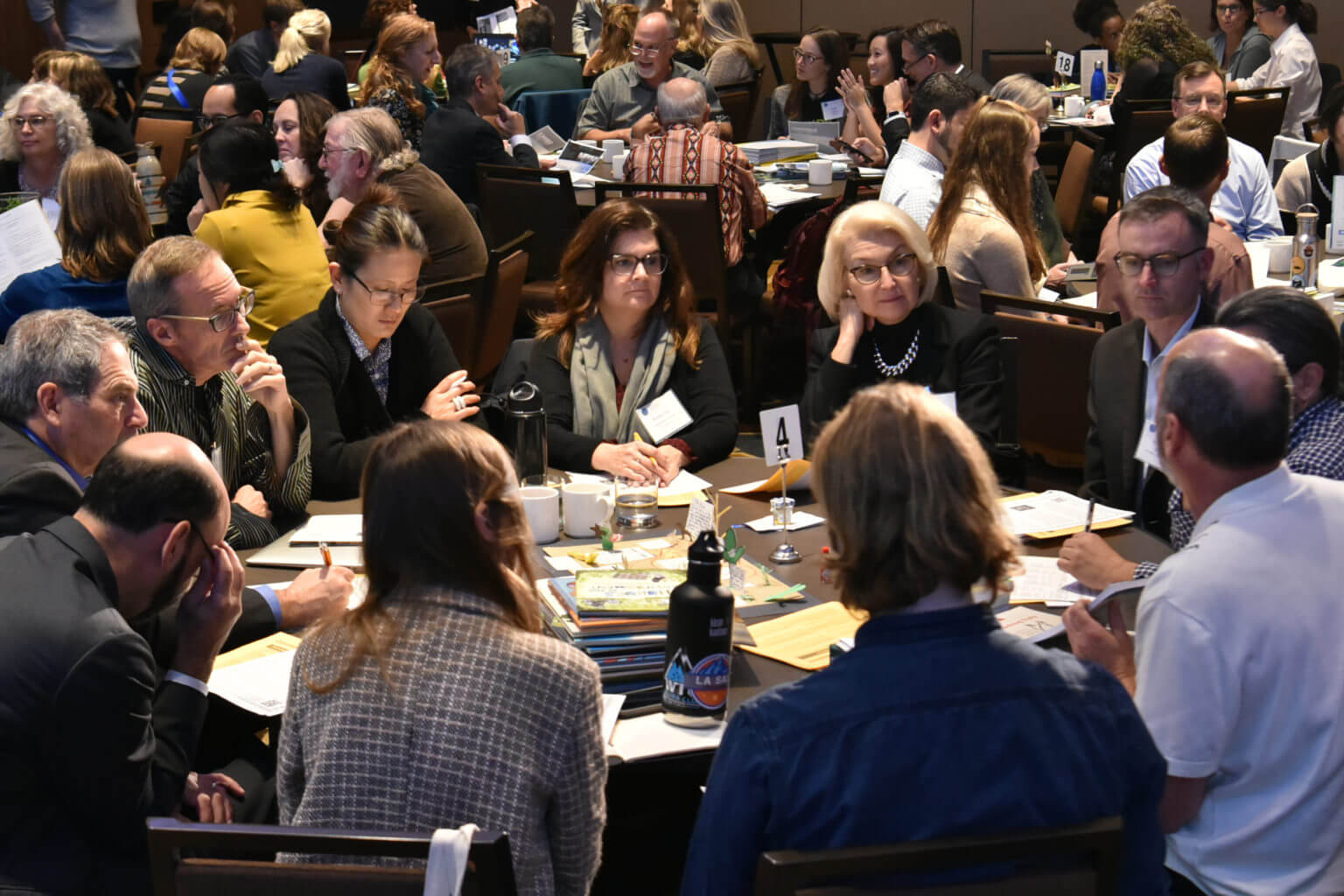
ECCLPS committee work forged crucial understandings between the K–12 and the higher education sector around what has already been accomplished. Ten Strands is thrilled that in addition to California’s Blueprint for Environmental Literacy (2015) for K–12, the ECCLPS report now serves as a starting blueprint for environmental literacy in higher education as these institutions support K–12 educators.
Echoing the statewide vision in resource management and in education, the first cross-cutting recommendation in the report is to “integrate environmental and climate change literacy across all subjects.” Another recurring theme is the need to “emphasize action and civic engagement as part of environmental and climate change literacy.” As Karen Cowe, Ten Strands CEO and ECCLPS curriculum subcommittee co-chair explained,
We want our students—and our students want—to be engaged in inquiry-based learning leading to action in their local communities in partnership with community-based organizations, science-rich institutions, environmental justice organizations, social justice organizations, infrastructure organizations, water, waste, [and] energy.
ECCLPS members engaged in robust discussions about the need to teach about climate in ways that are not just locally and culturally relevant, but also developmentally appropriate. For example, California’s Next Generation Science Standards (NGSS) build important climate-related science concepts at the elementary level, but it is not until middle school that climate change is explicitly addressed.
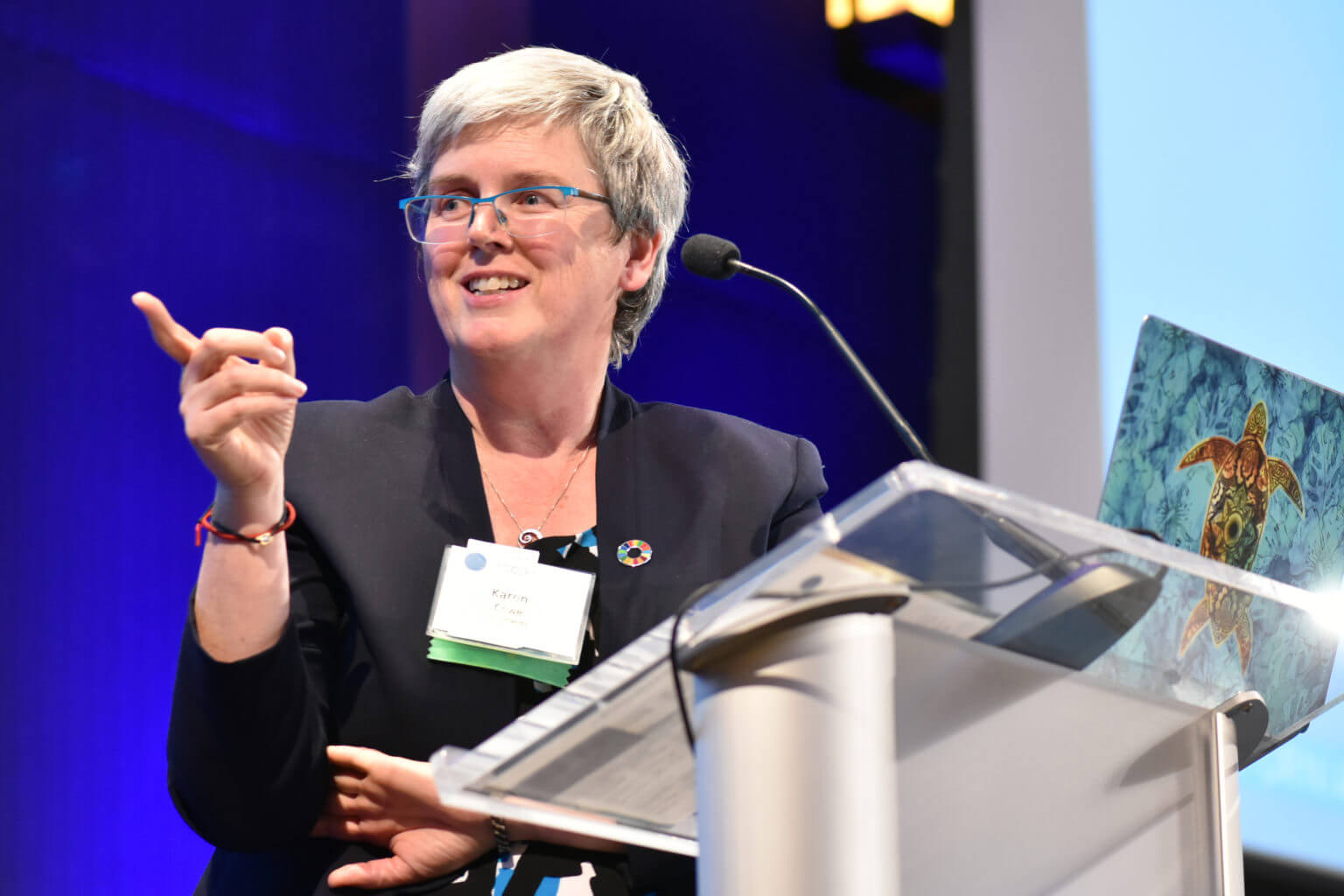
Taking a Political Approach
Many committee members felt an obligation to answer global youth climate strikers’ call to address climate change itself and the eco-anxiety it is creating for even our youngest students—and that is not a topic for only science teachers to take on. Drawing on trauma-informed practices gaining traction in California’s public schools, ECCLPS members are emphatically seeking ways to empower students of all ages. “Increased climate literacy without a focus on activism and social movements can lead right to despair, and that’s not what we’re trying to do as educators,” said summit panelist Tim Swineheart, a teacher in Portland Public Schools and coeditor of A People’s Curriculum for the Earth: Teaching Climate Change and the Environmental Crisis. Empowering teachers to support students in engaging politically on behalf of their communities constitutes an important challenge in the field.
Another summit panelist, Kavita Gupta, AP chemistry teacher and curriculum lead at Fremont Union High School District, presented her approach to curating an annual student-led climate summit.
We are teaching [students] research skills; we are not teaching lessons or units. Students are developing their own understanding of climate change based on their own research and data. . . .This somewhat mitigates the issue of politicized education. . . .Because this is a research-based model, it can easily be superimposed [onto] any curriculum without adding to the already burdened [educators]. . . .If a student comes to me and says, “I don’t believe in climate change,” I say. . . , “Help me understand more. Let’s look at some data.”. . .Tell me, based upon data, why do you believe that?

Summit panelist Bill Sandoval, professor of education at UCLA, advocated for a more direct approach.
If we’re going to help kids learn science in ways that help them act politically, then we’ve got to take the political nature of these problems head on. And we need to help teachers understand how to do that in classrooms in places where they might be antagonistic to that.
Providing Solutions and Resources
Importantly, the in-service subcommittee’s first recommendation was to “increase teacher confidence in environmental and climate change literacy.” The deep roster of researchers and scholars and robust climate data sources within the UC and CSU systems may be just what K–12 educators need to enact the state’s vision of inquiry- and action-oriented learning.
To accomplish these civic-minded instructional shifts at scale for California’s 6.2 million public school children, the ECCLPS team realized that educators do not need another model curriculum but, rather, as the in-service subcommittee suggests, “professional learning offerings for teachers that strategically convene educators and relevant local working groups or community networks to reexamine and localize PK–12 course offerings.”
Fortunately, there is much to build on at the university level and as groups within and across campuses come together to address climate change. For example, at the summit Dr. Ram unveiled UC-CSU NXTerra, a project created by the Knowledge Action Network focused on “transformative education for climate action.” The NXTerra website features resources that college faculty of all disciplines can use to address the climate crisis. In addition, all teachers have to earn bachelor degrees, so if universities can ensure strong climate knowledge in undergraduate studies, interest and confidence in climate literacy may increase among those seeking teaching credentials.

There is great potential to connect such resources with the robust professional learning already provided by the UC and CSU systems. For example, the California Subject Matter Project is a network of nine discipline-based statewide projects that support ongoing quality professional development. Activities and programs are designed by university faculty, teacher leaders, and teacher practitioners to improve instructional practices and to lead to increased achievement for all students. Three of these projects are already addressing environmental literacy through summer institutes and ongoing trainings that bring together scholars and educators to create curriculum.
By shifting to inquiries around climate-related topics, these and the numerous other high-quality professional learning initiatives described in the report could pave the way for professional learning series that reach even more K–12 teachers and administrators—and they can do it without the extensive coordination required to enact some of the ECCLPS report’s other recommendations. Building on such successes will be key to reaching the goal of climate literacy for 500,000 high school graduates each year.
Looking to the Future
California intends to have 100 percent zero carbon electricity by 2045; the UC system has pledged to become carbon neutral by 2025; California’s public educational system unambiguously states that environmental literacy, including climate change knowledge, are important learning outcomes for every student. How, then, can higher education, the K–12 system, and our allies provide equitable access to rich and relevant learning for teachers and youth and develop leadership capacity at every level? The ECCLPS team is grappling with these issues now. Overheard at the summit:
- Should we call students climate “warriors,” or is that too aggressive?
- Do we need another task force, another committee, or should we just fast-forward to opening a joint UC-CSU center?
- Do we need to change the teacher education program requirements in order to explicitly address climate change, or is it baked into the system enough already?
- Do we have time to wait?

The summit’s participants also identified the need to broaden inclusion in the project to include more students, more indigenous voices, teachers’ unions, and community colleges. Funding was also considered. California’s decentralized local control funding and accountability methods for K–12 school districts will provide opportunities and challenges. As Frank Niepold, the senior climate education program manager at NOAA’s CLEAN Network, a national hub for vetted climate change teaching resources, and ECCLPS curriculum subcommittee member, pointed out, substantial investments of funding and coordination will be required to take this work to scale and to keep it moving forward in the context of constant turnover in administrative roles at all levels.
The first phase of ECCLPS work ended on a high note, with closing speaker Marquita Grenot-Scheyer, assistant vice chancellor, Educator Preparation and Public Schools Programs, CSU Office of the Chancellor, and ECCLPS steering committee co-chair declaring that
[Empowering 500,000 environmentally literate high school graduates every year] is one audacious social justice goal. . . .We will do this work together by amplifying and refining our efforts, beginning new initiatives, maybe even a center. . . , making connections among all of our initiatives and programs throughout the state and nationally, and developing a strategic solution based upon all of your collective input.

Our leaders have set the course in terms of infrastructure and education. Climate change is a complex issue that requires more than just scientific knowledge to solve. For our students to have the content knowledge, thinking skills, and socioemotional intelligence to successfully meet the challenge, they must learn from teachers who themselves are comfortable working outside of disciplinary silos and willing to open their classroom doors to prickly issues students are facing in their communities. With new state budget funding for the teacher pipeline, especially in STEM, California has the opening and the obligation to develop robust and broad-based support for this work—in research, policy, and practice. Rather than thinking of addressing climate change as “one more thing,” we can help teachers see it is the thing our youth are rightfully insisting on learning.
The ECCLPS steering committee met again in March 2020 with a few new members. After each subcommittee prioritized recommendations in the report with the help of a probing questions protocol, the group’s momentum was clear. There is an even more urgent desire to invest in this work than there was when we began 18 months ago. As Grenot-Scheyer closed out the March session, she acknowledged that we had gathered the right people to do the right work at the right time. Wish us luck!
Photo Credit: Todd Cheney, Photographer, UCLA

